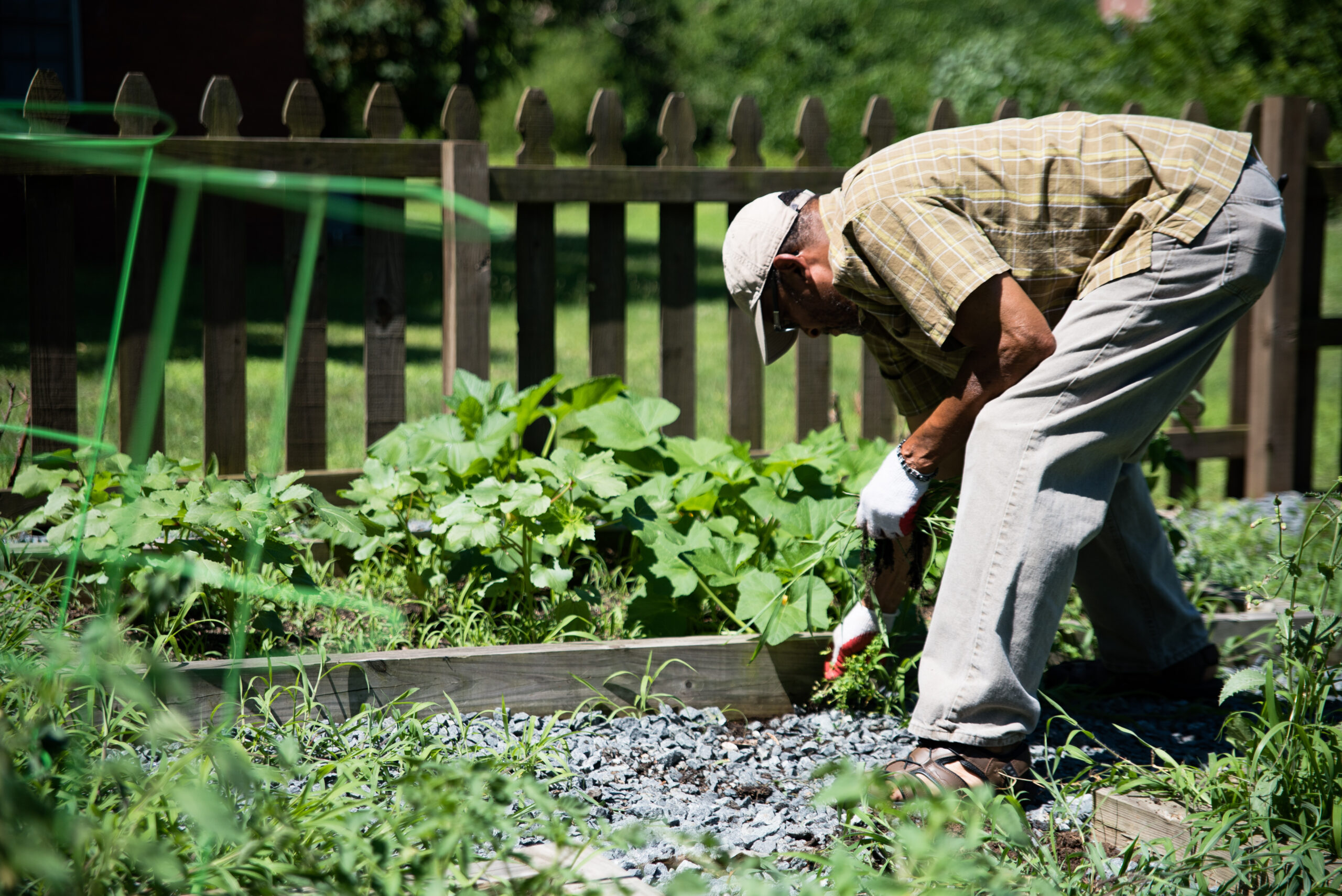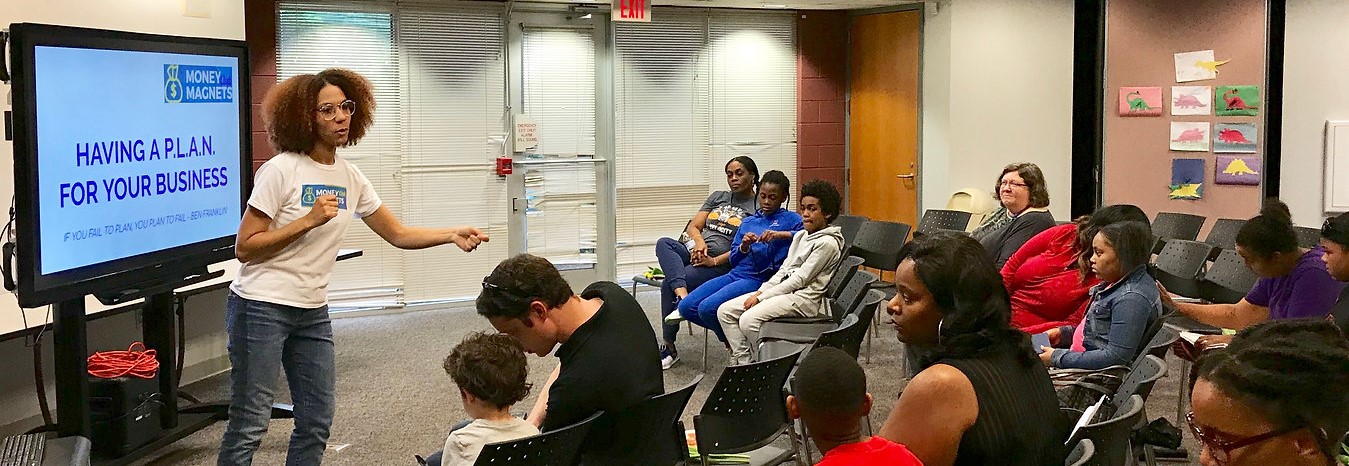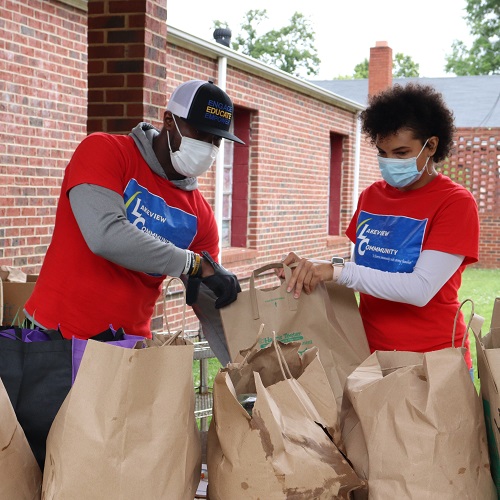
Restoring Neighborhood Stability in Grier Heights
United Way of Central Carolinas’ United Neighborhoods funds and guides community partners to help change the odds for individuals and families living in our region’s most under-resourced neighborhoods. From financial stability to affordable housing to quality education, the needs of these communities are many and varied.
Stacey Price Brown’s family roots run deep in Grier Heights, a historically middle-income black community in Charlotte. Her great-grandfather owned a barbershop in the neighborhood, and she remembers spending much of her younger years with grandparents who lived on Fannie Circle and other relatives who owned homes in the neighborly community.
“It was always a very family oriented community…getting together on Friday and Saturday nights for fish frys was very common, as well as worshipping together,” said Stacey, a Grier Heights resident and president of the Grier Heights Community Improvement Organization. “Residents were hardworking and owned homes as well as businesses in Grier Heights.”
Over the years, different challenges moved into the neighborhood located off Randolph Road, just three miles south of Uptown. Drugs pervaded the area in the 1980s and 1990s, coupled with low rates of educational attainment and homeownership, and high rates of poverty, unemployment and crime. In 2015, the number of violent crimes in Grier Heights was over four times Mecklenburg County’s average.
Don Gately, executive director of CrossRoads Corporation for Affordable Housing and Community Development, said the perception of Grier Heights from outside the neighborhood was quite dire.
“Being raised in a neighborhood as challenged as Grier Heights has been in recent decades takes a toll on kids,” Don said. “If you’re born and raised in Grier Heights, you’re two and a half times more likely to drop out of school before high school graduation.”
These conditions are changing as nonprofits, residents and other stakeholders work together to improve the quality of life in the neighborhood through access to quality education, health, financial stability and community resources. This work is bolstered by the support of United Way of Central Carolinas’ United Neighborhoods initiative.
Launched in 2017, United Neighborhoods begins with a $2.4 million commitment over three years in the Grier Heights and Renaissance neighborhoods in Charlotte. In 2018, the initiative expands with the addition of grants for neighborhoods including Brookhill, Hidden Valley, Lakewood, Smithville, West Boulevard Corridor and an effort focused on Freedom Drive.
In each neighborhood United Way is working with community quarterbacks to fund and guide efforts toward building thriving neighborhoods where families want to live, while generating outcomes that can impact multiple generations.
Tackling issues of upward mobility
With an emphasis on community outreach, Myers Park Presbyterian Church saw a need for revitalization in Grier Heights and in 2008 founded CrossRoads Corp. For the past decade, the nonprofit has focused on improving the community’s 34 percent unemployment rate and median income of $17,000 by re-establishing neighborhood stability – residentially, economically and educationally.
“We realized that no one factor was going to change both either the perception of Grier Heights or the quality of life here,” Don said. “And so we decided we would take a holistic approach to neighborhood revitalization.”
CrossRoads Corp. has established six working teams to tackle issues of upward mobility, each addressing a specific need of the community – new homes, community center operations and programming, youth programs, preschool and parenting education, critical home repairs and study/fellowship programs.
The nonprofit also partners with about 70 various community organizations, businesses, churches and others that provide services to Grier Heights, from tutoring to health care to housing resources.
“We want to make sure we’re addressing areas within the community that need to be addressed in order to make it livable, in order to make it safe and in order to make it sustainable,” Stacey said.
Re-establishing neighborhood stability
One of the first things CrossRoads Corp. did to improve neighborhood stability was purchase every rundown, boarded-up duplex on Heflin and Orange streets, and additional lots to develop quality affordable housing. CrossRoads Corp. has built and sold more than 30 new single-family houses, addressing the 86 percent of homes in the neighborhood that aren’t owner-occupied.
Through federal subsidies, the initial homes were restricted to buyers with incomes below 80 percent of the area median income. Today, about 20 percent of the new homes are non-income restricted. Forthcoming housing in the neighborhood will include units for seniors earning between 30 and 60 percent of the area median income.
“Mixed-income is the ideal neighborhood arrangement,” Don said. “We’ve learned in recent years that to have a diversity of incomes makes it a richer living environment for all families in the neighborhood.”
In 2015, CrossRoads Corp. and community partners redeveloped the historic Billingsville School into the Grier Heights Community Center. Today, it is a central hub providing residents with a computer lab, GED and literacy classes, afterschool and job readiness programs and a space for community events.
“When you’re dealing with a community like this you have to take into consideration accessibility to certain needs that improve the quality of life,” said Tijua “Ms. T” Robinson, director of the community center. “We strive for this community as a whole to grow and progress, and the only way to do that is by supporting everyone’s needs.”
To create an opportunity for future success of children in the neighborhood, an aging strip mall was replaced with The Learning Collaborative. The high-quality preschool relocated to the neighborhood in 2016 and receives funding from CrossRoads Corp. and Myers Park Presbyterian.
“Folks are starting to realize that there are resources, programs and services here that will help empower them and improve their quality of life,” Don said.
Looking toward a promising future
With this progress, the neighborhood already has seen crime plummet, homeownership climb and high school graduation rates improve. But there more work to be done.
As CrossRoads Corp. and its partners continue working to create opportunity across the neighborhood, United Neighborhoods funding is helping the organization strengthen infrastructure, engage in community planning and provide grants to other nonprofits serving the Grier Heights neighborhood based on residents’ needs.
“For United Way to come along beside us and say we’d like to work with you and leverage what you’re already doing is really substantial,” Don said. “We’re in it for the long haul and to be here side by side with the residents of Grier Heights.”
And for Stacey and other residents with roots in Grier Heights, the return of the family oriented community they once knew is exciting and promising.
“I definitely see something bigger and better than Grier Heights has ever been. A place where our ancestors would be proud,” Stacey said.
Believe in the work we are doing? Give today.
Article written by Alyssa Mulliger, Content Marketing Manager, United Way of Central Carolinas.




